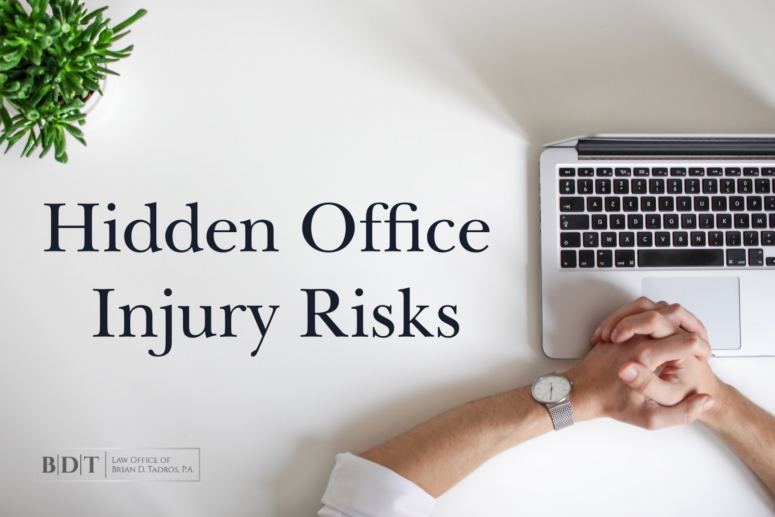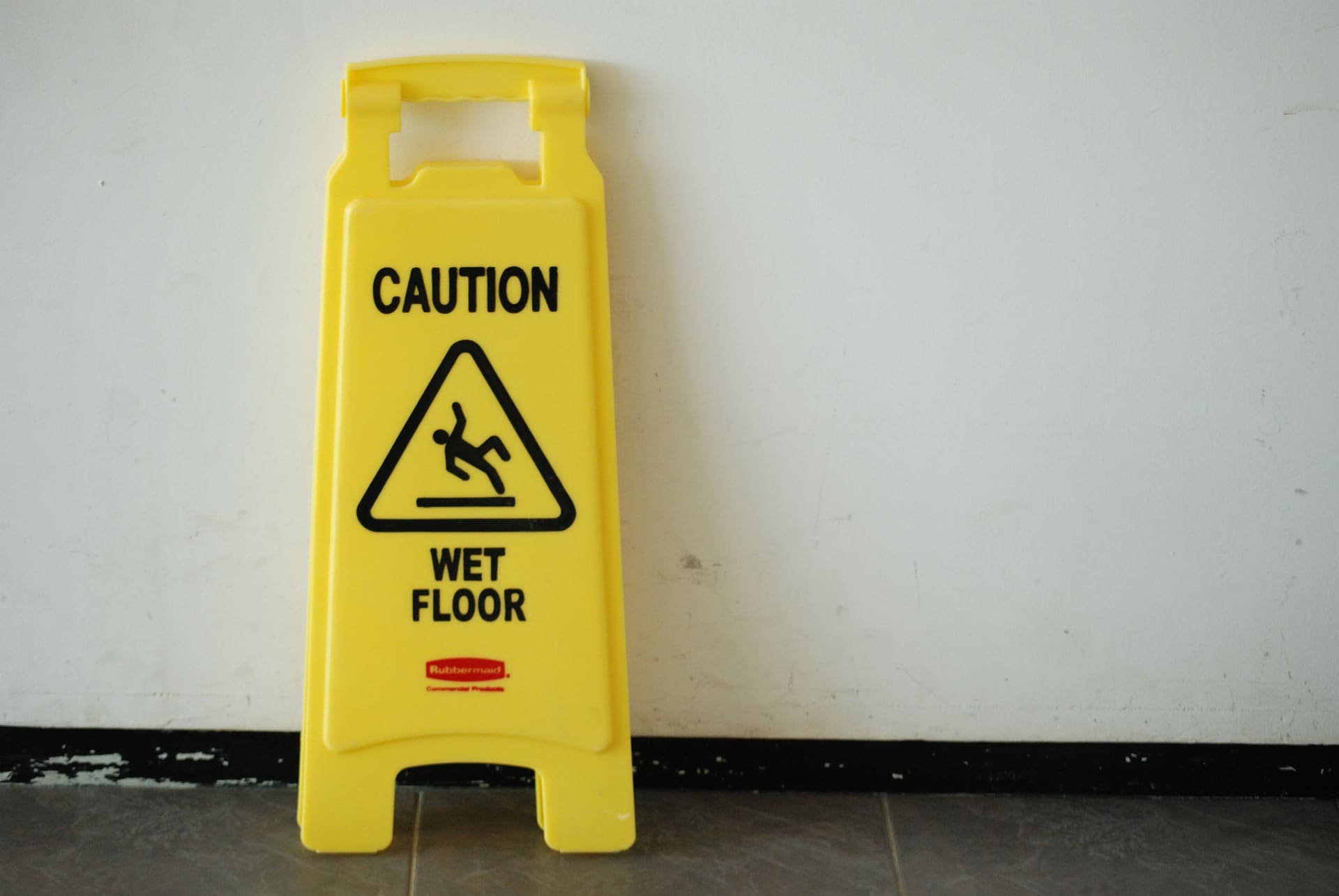
It isn’t only construction workers that can suffer a workplace injury.
Learn about the most common injury risks that threaten office safety.
When it comes to workers’ compensation claims, many are under the impression that, because they work in an office rather than a construction site, they are removed from danger.
Although most office environments lack the heavy machinery and sharp tools that can make a builder’s job site so hazardous, office injuries are actually quite common.
Keep reading for some of the most common injuries that threaten office safety.
Injured at Work In Florida?
1. Falls
Did you know office workers are more than twice as likely to experience disabling injuries from a fall than non-office workers?
Wet floors, boxes, cords, out-of-place chairs, and personal items all align under a single category: slip and fall risks. When multitasking employees move about with a purpose, reading text messages or documents as they walk, they aren’t aware of their surroundings, which can cause them to stumble or fall.

In addition, most office environments lack the standards and guidelines that a warehouse or construction site would have. Most salespeople and data entry clerks simply aren’t familiar with the trip hazards the office poses.
The good news is that falls are preventable.
- Be aware of your surroundings; don’t multitask while walking.
- Keep all drawers and cabinets closed.
- Secure loose carpets and cords and clean up spills immediately.
- Use a sturdy stepladder to reach overhead objects.
2. Repetitive Stress Injuries
Most office workers don’t tend to think of computer work as “repetitive stress.” But they’ve all heard of carpal tunnel syndrome.
Carpal tunnel syndrome is caused by a compression of the median nerve in the wrist. This nerve compression can be caused by repetitive wrist motions, such as typing, and may require surgery to correct.
But carpal tunnel syndrome isn’t the only form of repetitive stress injury. Experts have been warning against the dangers of prolonged sitting for decades. By sitting at a computer for most of the day, you can put your body at risk for compressed spinal discs, varicose veins, and back pain.
Poor posture increases your likelihood of injury, so follow the recommended guidelines for creating an ergonomic workspace: make sure your chair supports your back, keep your elbows and knees at a 90° angle, and make sure your monitor is at least an arm’s length away from your eyes.
3. lifting hazards
Warehouse employees and construction workers get plenty of training and equipment to help lift heavy objects. But office workers rarely get the same amount of instruction.
Combine this lack of training with weakened muscles from sitting at a desk all day, and that heavy box of copy paper is now an occupational hazard.

Follow recommended office safety guidelines when lifting heavy objects:
- Use your legs for strength, not your back.
- Keep your back straight when lifting and carrying.
- Do not twist your back.
- Hold heavy items with your entire hand, not just your fingers.
- Get assistance, if needed.
Make Office Safety a Priority
Office injuries may not be the most common form of workplace injury in the United States, but I doubt this statistic will provide much comfort if you are the one who is injured.
Following proper office safety guidelines is the best way of preventing injuries and illnesses in the workplace. Make sure your office is aware of the potential hazards that exist in your office and create a plan or training program to make office safety a priority.
If you’re injured at work, do you know what your rights are? If you can’t work, will worker’s comp cover you?
At The Law Office of Brian D. Tadros, our goal is to provide our clients with the education and support they need. If the office safety standards at your job were responsible for your injuries, contact us today for a free consultation about your case.
Let’s see what we can do to start making things right.


